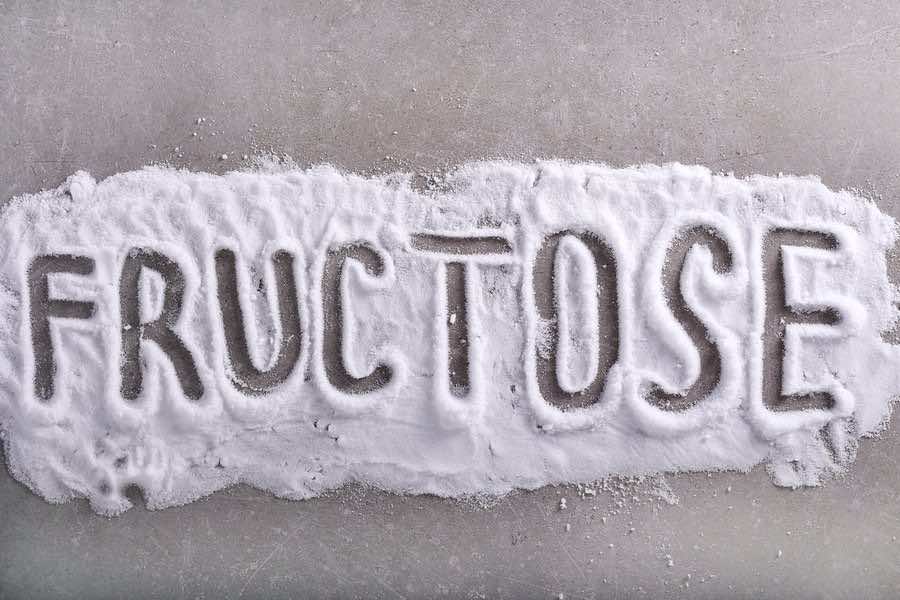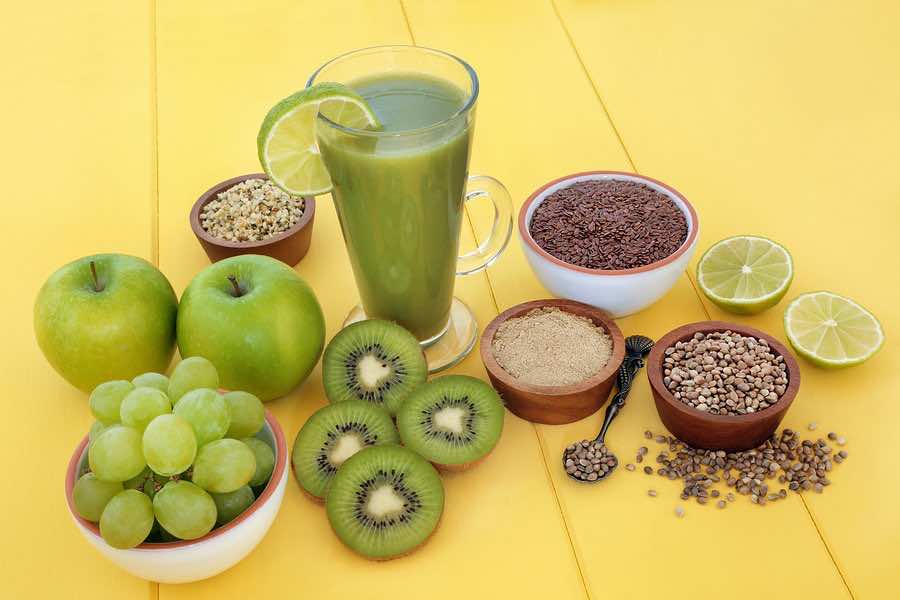
Fruitarian Diet: Is This A Safe Diet To Use?


Fruitarian Diet: Is This A Safe Diet To Use?
When it comes to getting your nutrition program in check, most people already know the importance of having the right number of calories and counting their macros.
‘Macros’, which stands for macronutrients, have received a lot of attention over the last few years and now the word is commonplace in most nutrition circles. Representing how many carbohydrates, proteins, and dietary fats you eat, some people think this is the golden ticket to achieving health and a body they feel proud of.
And while getting your macronutrients straight is important, it’s also important not to overlook the significance of food choices.
One diet that focuses on just that is the fruitarian diet plan. This plan revolves around eating – you guessed it, fruit.
Nothing but fruit.
Could this be healthy? If not, what problems could come about because of it? We are seeing orthorexia more and more these days, which is a form of eating disorder where people will not eat anything but pure food. Fruitarian essentially takes this one step further. While it’s true that fruit is very pure and healthy, what happens if you eat only that?
Let’s look at the repercussions of such an approach.
Defining The Fruitarian Diet

Before we go further, we first need to define the fruitarian diet, so you know precisely what it is.
A fruitarian diet follower consumes fruit, always in its raw state. Some fruitarians also add nuts and seeds to their diet plan since these stem from the same place often that fruits do (trees), but vegetables are not permitted. Likewise, grains and animal products are also a no-no. This means no meats, no dairy, no seafood.
Beans and legumes? Those are out as well.
Granted, there are different degrees of fruitarians. You have the hardcore individuals who eat nothing but fruit and fruit only. No nuts, no seeds, nothing else.
Then you have those who allow more leeway in their diet and may consider themselves a fruitarian as long as 85% of their total calorie intake comes from fruit. The remaining calories are free to get elsewhere.
Generally speaking, as odd as it may sound, the less of a fruitarian you are, the better.
Let’s back up a minute.
Is Fruit Healthy?
We need to go over the health benefits of the fruit. On its own, fruit is a very healthy food.
It is high in sugar, but it’s also very rich in dietary fiber as well. This is important because fiber helps keep your blood glucose levels in check, promotes healthy bowel movements, and is also vital for ensuring that you are optimizing your overall heart health.
The sugar found in fruit is a combination of glucose and fructose, and it’s only the glucose that spikes your blood glucose level. So, in reality, of the sugar found in fruit, only about half of that sugar will be potentially raise blood glucose. And with the fiber it contains, you get an even lesser effect.
Fruit is also an excellent source of antioxidants as well. These are important to help combat free radical damage that can occur, which can eventually lead to the process of aging. We encounter free radicals each and every day. How we come to deal with those free radicals is what will matter. Armed with the right antioxidants, they aren’t going to play nearly as significant a role in harming our health.
Fruit is also quite low in calories. One piece of fruit – a banana, apple, pear, orange, and so on contains just 50-100 calories. One cup of berries, melons, grapes, etc., contains about the same.
So someone with a maintenance calorie intake of approximately 1800 calories, for instance, will need to eat a lot of fruit each day to reach this level. About 18-36 cups or pieces of fruit. Can you imagine eating all that in a day?
It is A LOT. At least one to two an hour for most awake people, about 16 hours a day.
For this reason, the diet will often produce weight loss in many people. Weight loss is one of the stated reasons why people choose to follow this approach. This and some other reasons, such as to detoxify/cleanse the body, to avoid having to cook (eating raw fruit is super simple!), and to use a diet that is friendly to the environment and animals.
Now with the diet, there are some fruits that you can eat at any time. These include bananas, lemon juice, avocados, coconuts, olives, raw chestnuts, cashews, brazil nuts, hazelnuts, almonds, and pines.
These foods are free to eat all day long. Other fruits, nuts, and seeds are limited to just certain periods of time during the day.
One additional rule to note is while on this diet, you should not mix fruit within 90 minutes. So essentially, if you eat two apples, you should wait ninety minutes before eating another fruit.
This will help further assist weight loss because you are limiting variety. How many pieces of the same type of fruit will you eat in a single meal? Most people will get bored after about two apples or bananas. So you may only get 200 or so calories per 90 minutes. This is where adding nuts and seeds comes in handy. By adding these to the diet, you suddenly boost your calorie intake and can make it more sustainable. Likewise, they also bring some much-needed fats to the plan. And, it’ll simply taste better. Get some natural peanut butter and smear it over your banana or apple; it’ll make a difference.
So there you have a brief overview of what the fruitarian diet is all about. Now let’s talk about some of the biggest drawbacks you will see if you follow it.
As you’re about to discover, this is not a diet that’s recommended for anyone.
The Issues With Fructose

First, let’s talk about the issues that occur with fructose. We’ve probably all heard about how we need to avoid high fructose corn syrup, which is often found in soda and other ‘junk’ foods.
This is because our body can only store so much fructose each day (approximately 50 grams) and anything more than that is likely to be converted to fat quite readily.
In addition, as this process takes place, it can increase our overall level of inflammation in the body, so that’s another reason why you need to be careful about how much you eat1.
As we noted earlier, fruit contains about half glucose and half fructose. On a normal diet plan, fruit is not a concern. At about 5-10 grams of fructose per serving, if you eat a few servings of fruit per day, you are well within your limit of what your body can handle.
Soda is a much greater concern as it can easily deliver you 20-30 grams of fructose per hit, depending on how much you drink.
But when all you eat is fruit, this becomes a different story. If you are eating 10-20 pieces of fruit per day, now you will go over your limit for fructose, which can be problematic. It is true that you really can get too much of a good thing.
Blood Sugar Issues
You can also expect to experience some blood glucose regulation issues while on this diet plan. Here again, while one piece of fruit combined with a meal is unlikely to have a noticeable impact on blood glucose levels, if all you are eating is fruit and large quantities, it’s certainly going to impact your blood glucose levels. This is going to lead to you struggling to maintain your body weight over time and could also put you at a higher risk factor for diabetes as well.
Fruit sugar is not necessarily bad, but if you take in as much as what’s found in the fruitarian diet, it can be.
Issues Of Too Much Fiber

Another problem you may encounter is too much fiber. This is another instance where too much of a good thing is bad news. Consider that your average serving of fruit contains about 2-6 grams of dietary fiber.
Eating 15 pieces of fruit a day could be upwards of 90 grams of fiber per day! It doesn’t take much to realize that this could mean many trips to the bathroom in between meals.
To make matters worse, some people also struggle to digest fruit entirely. So now you have all this fiber plus this issue at hand, and diarrhea is very likely to result. In a normal situation, you could take a quality digestive enzyme to help with the digestion of fruit, but when all you’re eating is fruit, it still may not be enough to keep you comfortable.
What’s especially ironic is that one problem with taking in so much dietary fiber could hinder the absorption of certain minerals in the body2. So if you eat too much dietary fiber, you may fall short in key nutrients.
But the funny thing is, as we’ll talk about in a moment, you’re already going to fall short in those nutrients because of the diet. So there’s nothing more to worry about (this is not a good thing, however).
Getting in some dietary fiber in your diet is a very good thing. Taking too much is not.
Lack Of Protein
Perhaps one of the biggest issues with the fruitarian diet is that you are getting pretty much zero protein. At least vegetables do offer some protein, even if it is a very small dose.
Fruit contains no protein. Zero grams per serving. If you add seeds and nuts to your diet, you will get some protein there, but even then, the amount is so low. For example, to get just 60 grams of protein from almonds (which is still on the low end of what most people need to survive), you would have to eat two cups of almonds daily.
This may not sound like that hard of a feat, but remember that will also mean you are taking 145 grams of fat and 1650 calories. For some people, this is about all you can eat during the day.
Then you wouldn’t even be considered a fruitarian any longer.
It’s simply too hard to meet your protein intake off seeds and nuts alone, so you will fall deficient no matter what you do while on this diet. And even if you could, the protein found in seeds and nuts is not a complete protein, so you still wouldn’t be that much further ahead. Your body requires complete protein sources to ensure you can rebuild and maintain body tissues.
If you do become protein deficient, some of the key symptoms you may develop include:
· Edema, which is a build-up of fluid under the skin tissues so you’ll look puffy overall
· Fatty liver disease
· Skin, hair, and nail-related problems
· A loss of lean muscle mass and, with it, a decrease in functional strength
· A higher risk factor for bone fractures
· Decreased growth, especially if the deficiency comes during the adolescent years
· Increased risk of infections
Protein is the only macronutrient with firm recommendations to stay healthy, and sadly, this diet has you falling seriously short.
Lack Of Minerals
In addition, you will miss out on a number of micronutrients while following this diet plan. While you may take in a good amount of vitamins – vitamin C, vitamin A, and so forth- you will take in virtually no calcium, iron, phosphorus, zinc, or vitamin D, and you’ll also be low in B vitamins.
There are too many nutrients that the body needs that aren’t found in fruit that there’s no way you can expect to stay healthy. While you can take a multivitamin and mineral formula and call it a day, that will never be as good as getting those nutrients from real food.
Lack Of Omega Fats

Finally, one last big problem with this diet plan is that you won’t take any omega-3 fatty acids. These fatty acids primarily come from oily fish, which is heavily restricted in this diet.
While you may get some in from flaxseeds and walnuts if you choose to include them, the form and amount are not nearly as great as what you would get from fish.
Omega-3 fatty acids are important for helping boost your health and do everything from lowering inflammation to protecting your brain health3 to boosting your heart health4.
The body cannot make these on its own. Hence they are essential fats and must be taken in externally. The fruitarian diet is not going to provide that.
So there you have the low down on the fruitarian diet. Is it a recommended diet plan for health and longevity? Not. While you may be able to carry it out for a few days, attempt to use it any longer than this, and you will likely land yourself in the hospital.
Frequently Asked Questions
References:
1. Rayssiguier, Y., et al. “High fructose consumption combined with low dietary magnesium intake may increase the incidence of the metabolic syndrome by inducing inflammation.” Magnesium research 19.4 (2006): 237-243
2. Greger, J. L. “Nondigestible carbohydrates and mineral bioavailability.” The Journal of Nutrition 129.7 (1999): 1434S-1435S
3. Fotuhi, Majid, Payam Mohassel, and Kristine Yaffe. “Fish consumption, long-chain omega-3 fatty acids, and risk of cognitive decline or Alzheimer disease: a complex association.” Nature Reviews Neurology 5.3 (2009): 140
4. Kris-Etherton, Penny M., William S. Harris, and Lawrence J. Appel. “Fish consumption, fish oil, omega-3 fatty acids, and cardiovascular disease.” circulation 106.21 (2002): 2747-2757.
